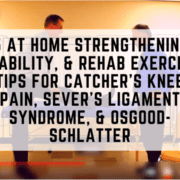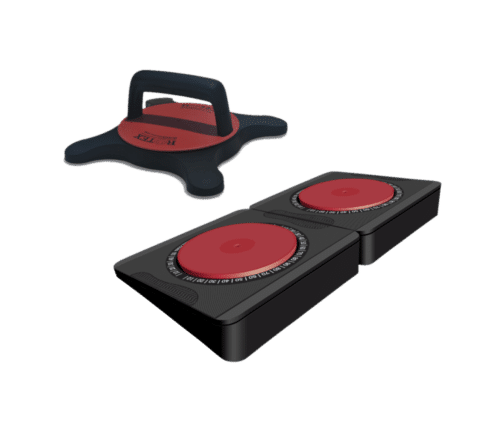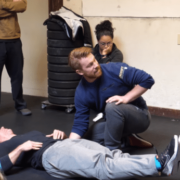Discover 15 exercise tips you can use to strengthen, stabilize, and rehab knees for symptoms surrounding catcher’s crouch knee pain, Sever’s ligament syndrome and Osgood-Schlatter disease…
Osgood-Schlatter Disease Treatment:
Sever’s Disease Rehab Exercises:
15 Ways To Prevent Injury, Minimize Damage, & Rehab Knees
Fragile. What a “dumb” joint. I heard one of my 8th grade hitters, who took a break from lessons to play football, busted his knee requiring surgery, and would be out for 6-8 weeks. Another one of my 7th grade hitters busted his knee playing soccer, requiring minor surgery.
And yet another hitter of mine, a Junior in High School, tweaked his knee playing basketball at school, and will be undergoing an X-Ray (which will probably turn up negative), followed by an MRI to be safe.
And btw, all these hitters are smart young men, who have performed above and beyond for their age in the batter’s box. I frequently tell my hitters, you’re no good to your team sitting on the “shelf”, so take care of your body.
So, what’s the answer?
SCIENCE-BASED TRAINING:
Improve your hitting strategy dramatically by applying human movement principles.
Learn not only how and what to train but also the science behind the methods.
Now, we can’t pull out ye ol’ pocket crystal ball, reveal an injury before it happens, and avoid it. But…we…can…prevent them! We’ll get into what we can do in a moment…but first,
Studies show today’s young athletes are sitting 80% of their day. Athletes are specializing in one sport earlier and earlier in life. If you read my recent post on 4 Tips On How To Train Springy Fascia, then you’ll remember the first rule of Fight Club is…ahem…training fascia is, to vary training vectors (i.e. be varied in different movement planes of motion). Healthy fascia HATES moving in the same way over and over again – like a 2yo, it gets bored easily!
On top of all that, observe the following reality about young female athletes from a New England Baptist Hospital post titled, “Why Do Female Athletes Suffer More ACL Injuries Than Males?”:
“High school female athletes in the United States suffer 20,000-80,000 ACL injuries per year. The issue isn’t only that female athletes are prone to these potentially season-ending injuries: the National Institutes of Health reports that female athletes are two to eight times more likely to suffer an ACL injury than their male counterparts.”
For young female athletes, factors that contribute to this increased risk are the differences in sports undertaken and in gender anatomy and structure (duh!). The truth is, a wider lumbo-pelvic-hip complex puts the knees in a structurally compromised position.
For all athletes, the knee is considered a “dumb” joint, oftentimes stuck, or rendered unstable, between two immobile joints – the hip and ankle. When the “bookends” are tight, stiff, and immobile, then the knee becomes unstable or “fragile”.
So, what can we do to prevent injury, minimize damage, or treat a knee injury? I wanted to share a list of credible FREE resources parents and coaches can use to reference for knee speed bumps…
- Overcome Knee Pain: Exercises and Solutions for Crunchy Knees (Gold Medal Body Fitness)
- Speedy Recovery? Ice Bath Benefits Not What They Seem (Hitting Performance Lab)
- 5 Simple Solutions For Anterior Knee Pain (Breaking Muscle)
- How To Do The Splits: Proven Hip and Leg Stretches for Splits (Gold Medal Body Fitness)
- Are You Weak In The Knees? (Breaking Muscle)
- Dr. Kelly Starrett from MobilityWOD is one of my favorite resources for troubleshooting injuries. Click Here for a YouTube link to view the videos he’s done on dealing with knees.
- Identifying the What and Why of Valgus Collapse: Part 1: Identifying the What of Valgus Collapse (FunctionalMovement.com)
- CLICK HERE for a YouTube video of Charlie Weingroff demonstrating how to fix knee valgus using Reactive Neuromuscular Training (RNT).
- The Do’s and Don’ts of Training Squats (CharlesPoliquin.com)
- Building Your Arsenal: 5 Exercises for Bulletproof Knees (GymnasticBodies.com)
- How to build Super Knees (Forum Topic at GymnasticBodies.com)
- Have a favorite training website with an overwhelming amount of info on it? Here’s a trick to filter information for what you’re looking for…go to Google, type the following into search engine: “site:<<insert actual website w/out www. here>> + keyword…for example “site:gymnasticbodies.com knees”
- PAY-FOR Local in-a-town-near-you Programs: Yoga and Pilates
- PAY-FOR Online Program #1: https://gmb.io/ff/#choose (I have no affiliation with this program)
- PAY-FOR Online Program #2: https://www.gymnasticbodies.com/gb-courses/stretch-series/#titleBar
If your athletes move better, then they’ll perform better. The knee is considered a “dumb” joint, so make knees SMART (aka “antifragile”) again!





